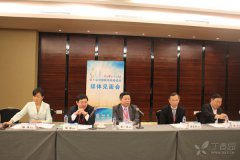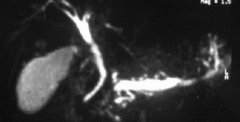读医学网
AAP发新版阻塞性睡眠呼吸暂停治疗指南
发布时间:2014-05-20 09:24 类别:呼吸系统疾病 标签:建议 睡眠 检查 扁桃体 来源:爱思唯尔
《儿科学》(Pediatrics)8月27日发表的美国儿科学会(AAP)新版临床治疗指南建议,行增殖腺扁桃体切除术的阻塞性睡眠呼吸暂停综合征(OSAS)患儿应住院(Pediatrics 2012;130:576-84)。
新版指南是由AAP的OSAS委员会对1999~2008年发表的3166篇相关论文及2008~2011年发表的指南类文章进行综述后制订的。
新版指南的部分重要建议如下:
·对于轻度OSAS儿童患者,特别是不适合接受手术或已接受手术且残留阻塞性呼吸暂停的患者,鼻内激素给药可有助于缓解症状。
·建议临床医生可常规进行OSAS筛查。可向儿童父母询问几个问题。一是:孩子睡眠如何?二是:有打鼾现象吗?如有,则继续询问打鼾时是否伴有呼吸困难。根据经验和病史,可对儿童进行睡眠检查等进一步客观评估。
·建议以下患儿在扁桃体切除术后住院:3岁以下;多导睡眠图检查提示重度OSAS;OSAS心脏并发症;发育停滞;肥胖;颅面畸形、神经肌肉疾病或当前呼吸道感染。
·如果扁桃体切除术后OSAS体征和症状持续存在,或如果未进行扁桃体切除术,则建议进行持续气道正压通气(CPAP)治疗。小组专家表示,CPAP是最佳的二线治疗方案。
·如果儿童或青少年经常打鼾或符合OSAS症状和体征,则建议进行多导睡眠图检查或转至睡眠专科或耳鼻喉科治疗。不过该建议未获得委员会专家和咨询医学学会的一致认可,因为现有的医疗资源无法对每例患儿都开展此项检查。而且研究显示,在50%的情况下,即使病史提示OSAS,睡眠检查结果仍可能为正常。因此,一个折中的建议是,如果无法进行多导睡眠图检查,可考虑进行其他诊断性检查,如夜间视频录制、夜间血氧饱和度测定、午睡多导睡眠图检查或门诊多导睡眠图检查。
小组专家声明与Philips Respironics等多家公司存在利益关系。
By: DOUG BRUNK, Clinical Neurology News Digital Network
An updated clinical practice guideline from the American Academy of Pediatrics spells out which children with obstructive sleep apnea syndrome who undergo adenotonsillectomy should be admitted as inpatients.
"That’s really important because the vast majority of children have adenotonsillectomy on an outpatient basis," said Dr. Carole L. Marcus, who chaired a subcommittee that assembled the guideline, which was updated from a 2002 version and published online Aug. 27 in Pediatrics.
Courtesy Dr. Carole L. Marcus
Another new component of the 10-page guideline, titled "Diagnosis and Management of Childhood Obstructive Sleep Apnea Syndrome," includes an option for clinicians to prescribe intranasal steroids for a subset of children with obstructive sleep apnea syndrome (OSAS).
"For children with mild obstructive sleep apnea – especially for those in whom surgery might be contraindicated, or in those who have already had surgery and have some residual obstructive apnea – intranasal steroids could be helpful," Dr. Marcus, who directs the Sleep Center at the Children’s Hospital of Philadelphia, said in an interview. "There are still a lot of unanswered questions [about this practice], one of the biggest being that all of the studies have been relatively short term, meaning weeks to months, not years. Does a child need just one course, or do they need to be on it for the rest of their lives? Those are studies that need to be done."
To update the 2002 guideline, Dr. Marcus and 11 other members of the interdisciplinary AAP Subcommittee on Obstructive Sleep Apnea Syndrome reviewed 3,166 articles from the medical literature related to the diagnosis and management of OSAS in children and adolescents that were published during 1999-2008. Then subcommittee members "selectively updated this literature search for articles published from 2008 to 2011 specific to guideline categories." Of the 3,166 studies, 350 were used to formulate eight recommendations, termed "key action statements" (Pediatrics 2012;130:576-84).
Since publication of the previous guideline, "there has been a huge amount of research done in this field," noted Dr. Marcus, who is also a professor of pediatrics at the University of Pennsylvania, Philadelphia. "Many of the initial studies we looked at for the first guideline were case series. Now people are doing well-structured studies and looking at some of the detailed outcomes such as neurocognitive findings."
The first recommendation in the updated guideline advises clinicians to screen for OSAS during routine health maintenance visits, "because OSA in children is underdiagnosed," Dr. Marcus explained. "Parents don’t necessarily think of snoring as a sign of a serious disease. They might think it’s funny, but it’s actually a sign of illness.
"Knowing how busy pediatricians are, there are two questions that are crucial," she continued. "One is, ‘How does your child sleep?’ The other is, ‘Does your child snore?’ If you get a positive [response] to the snoring [question] you do need to go into more detail. The next question would be, ‘Is there labored breathing with the snoring?’ Your history will tell you which children need further objective evaluation, such as a sleep study."
The guideline also recommends that the following subset of children be admitted as inpatients after tonsillectomy: those younger than age 3; those with severe OSAS on polysomnography; those with cardiac complications of OSAS; those with failure to thrive; those who are obese; and those with craniofacial anomalies, neuromuscular disorders, or a current respiratory infection.
Another component to the guideline is the recommendation that clinicians refer patients for continuous positive airway pressure (CPAP) management if OSAS signs and symptoms persist after adenotonsillectomy or if adenotonsillectomy is not performed. Dr. Marcus described CPAP as "the best way to go as a second-line option. Since the previous guidelines came out, the prevalence of obesity in children has gone up even more dramatically. Therefore, there is a lot more OSA out there, and pediatricians will be seeing a lot more in children of all ages."
One component of the guideline related to polysomnography proved difficult for the committee members and the consulting medical societies to reach consensus on. This recommendation states that clinicians should obtain a polysomnogram or refer the patient to a sleep specialist or otolaryngologist if the child or adolescent snores regularly or meets the symptoms and signs of OSAS.
"If one agrees that sleep studies are the only objective way to tell what’s going on, we just don’t have the resources in this country to study every child," Dr. Marcus said. "The literature is very strong showing that a history and physical exam could give you an idea of which children you should have an index of suspicion about, but do not tell you which children have sleep apnea. The vast number of children who have adenotonsillectomy for suspected OSA are having it done without any sort of objective finding. The studies that have been done show that about 50% of the time, even with a history that seems indicative of OSA, the children will have normal sleep studies."
Because of this quandary, the committee included a related recommendation, which reads that if polysomnography is not available, "then clinicians may order alternative diagnostic tests, such as nocturnal video recording, nocturnal oximetry, daytime nap polysomnography, or ambulatory polysomnography."
Dr. Marcus said that further changes to the new guideline may be warranted pending the results of the Childhood Adenotonsillectomy Study for Children With OSAS (CHAT). Sponsored by the National Heart, Lung, and Blood Institute, the goal of this multicenter, randomized trial is to determine the effect of adenotonsillectomy surgery on OSAS in children. "That study has just been completed, but nothing has been published yet," said Dr. Marcus, who is one of CHAT’s investigators. "That might change things even more."
There is a 44-page technical report that details the procedures the subcommittee members followed and the data they considered (Pediatrics 2012;130:e714-55).
Dr. Marcus disclosed that she has received research support from Philips Respironics. Another subcommittee member, Dr. David Gozal, disclosed having research support from AstraZeneca and being a speaker for Merck.; Dr. Ann C. Halbower disclosed receiving research funding from Resmed; and Dr. Michael S. Schechter disclosed that he is a consultant to Genentech and Gilead, and that he has received research support from Mpex Pharmaceuticals, Vertex Pharmaceuticals, and other companie
- 猜你会喜欢....





